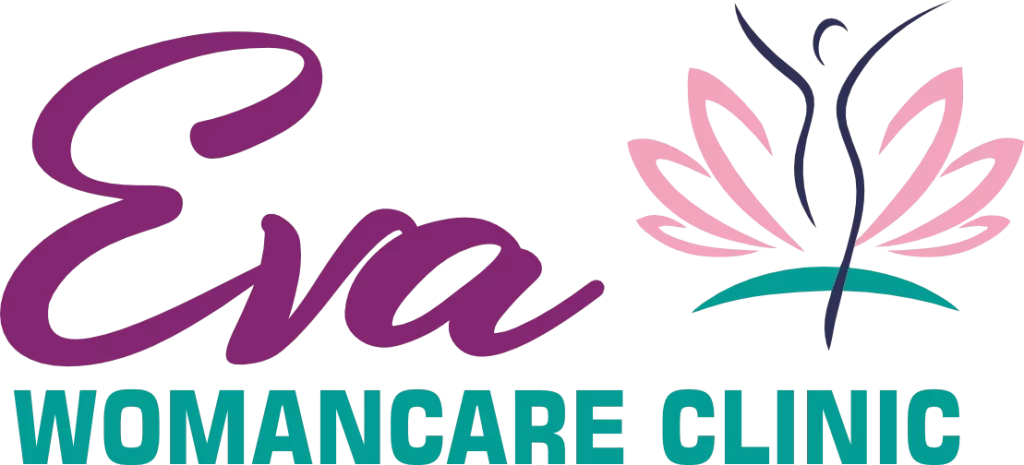Going under the knife is never easy, especially when recovery feels like climbing a mountain in slippers. For women juggling work, home, or planning a family, long hospital stays and painful wounds can be exhausting.
That’s why many are turning to laparoscopic surgery – less pain, fewer scars, and quicker bounce-back time. But yes, there’s still confusion around safety, cost, and the right time to consider it over open surgery.
At Eva Woman Care Clinic, we guide you through every decision – from diagnosis to choosing what’s safest and most effective for you. Whether it’s fibroids, endometriosis, or fertility procedures, we make sure you heal with confidence and care.
What is Laparoscopic Surgery?
Laparoscopic surgery feels like a smoother road compared to traditional cuts and stitches. This minimally invasive method uses a tiny camera, called a laparoscope, and ultra-thin tools through a few small incisions. We rely on this approach daily at Eva Woman Care Clinic to treat fibroids, cysts, infertility conditions and more.
It allows speedy access to organs with less disruption to surrounding tissue. The high-definition view helps guide every surgical move with near-perfect accuracy. From clearer vision to less internal trauma, this approach pairs safety with smart innovation that today’s women deserve.
What is Open Surgery?
Open surgery is the traditional format many are familiar with – it involves making a long incision for direct access. While it’s effective, especially in emergencies or complex cases, it tends to demand a longer healing period and greater care post-op.
We still consider open surgery in situations where visibility needs to be broad, or instruments can’t reach deeply enough laparoscopically. However, with it comes higher risks like infections, scarring, and post-operative pain, which can sometimes set back recovery and independence.
Comparison Between the Two Approaches
One look at scars can tell the difference between these approaches. Laparoscopic surgery leaves tiny marks, while open surgery may leave a larger, more visible one. In the case of laparoscopy, fewer incisions also mean less blood loss and shorter anaesthesia exposure.
Laparoscopy gives better visual access through high-resolution monitors and allows delicate movements in hard-to-reach areas. Open surgery provides a wider field but often causes more physical disruption, leading to longer recovery and increased discomfort for the patient.
Clinical and Recovery Benefits of Laparoscopic Surgery
Every woman wants to bounce back to her everyday life as soon as possible. That’s the beauty of laparoscopy. Healing is faster, scars are smaller, and discomfort is reduced. At Eva Woman Care Clinic, we follow strict protocols that combine advanced science with thoughtful patient care – for recovery that’s measured in weeks, not months.
Faster Healing and Shorter Recovery Period
No one likes staying in hospitals longer than needed. With laparoscopy, many patients go home the same day or the next morning. The muscles aren’t cut deeply, so the body heals more naturally and gently. Light activities are possible within days, and most resume normal routines in about two to three weeks.
Our care plans at Eva include follow-up checks and clear instructions so women can heal confidently and comfortably from home, without the dragging pace often linked to open procedures.
Reduced Post-operative Pain
Gentler cuts mean gentler healing. That’s one reason most of our patients report significantly less pain after laparoscopic procedures. Since muscles and tissues aren’t pulled apart harshly, even pain medication is needed less often. That’s a blessing for those who want to avoid strong drugs or are planning pregnancy soon.
Early mobility becomes possible, allowing women to walk, freshen up, and dine on their own soon after surgery. It’s these comforts that make a world of difference.
Lower Risk of Complications and Infections
Every small incision means a smaller chance of infection. Because there’s less exposure of internal organs and minimal cutting, the chances of internal bleeding or adhesions reduce dramatically. This cleaner, more targeted method makes post-operative headaches less likely.
We at Eva Woman Care Clinic maintain sterile environments and advanced safety measures, which combine perfectly with laparoscopy’s clean, efficient nature to keep surgery outcomes predictable and reliable.
Minimal Scarring and Aesthetic Outcome
Post-surgery, looking in the mirror should feel reassuring, not upsetting. Laparoscopic surgery leaves behind just a few tiny marks on the skin – almost like faded dots over time. There’s less damage to surrounding tissues, reducing the chance of raised or irregular scars.
Many of our patients feel emotionally lighter, knowing their bodies aren’t marked with large scars. This visual recovery plays a quieter, yet powerful, role in healing after surgery.
Role in Specific Surgical Applications
Laparoscopy isn’t just a concept; it’s a daily solution for women across different gynaecological conditions. From emergencies like appendicitis to planned procedures such as hysterectomy, the technique proves versatile. At Eva Woman Care, we apply laparoscopy across diagnostics, treatments and fertility-focused procedures, offering a comprehensive approach tailored for every unique case.
Common Laparoscopic Procedures
Our team performs several common surgeries using laparoscopy – each benefiting from smaller wounds and quicker recovery.
Among the top are appendectomies, gallbladder removals, and colorectal treatments. By avoiding bulky incisions, we help ensure these surgeries don’t become long-term disruptions in your life.
Colorectal surgeries, for example, require precision. Laparoscopy lets us handle these with accuracy, limiting the trauma while still offering effective results.
Gynaecological and Urological Surgeries
Whether it’s removing an ovarian cyst or restoring fertility steps, laparoscopy gently steps in. We use this approach for hysterectomies, fibroid removals, and tubal surgeries – especially where fertility preservation is a concern.
For urological needs, like pelvic organ prolapse or endometriosis that affects the bladder, laparoscopy helps reduce surgical strain while offering excellent clinical outcomes. Precision is key, and our tools give just that level of control and safety.
Bariatric and Abdominal Interventions
Managing weight-related issues can require surgery. For those seeking relief from morbid obesity or digestive complications, laparoscopic options offer effective results with fewer risks. Compared to open bariatric procedures, these methods lower blood loss and limit tissue handling, contributing to safer outcomes.
We also apply minimal incision techniques for liver, kidney, and gastrointestinal surgeries where delicate care is essential for long-term health.
Enhanced Surgical Precision and Outcomes
What makes a surgery truly effective? It’s about precision, training, and tools. At Eva Woman Care Clinic, we combine the experience of Dr Grishma Ranjangaonkar with modern surgical instruments that sharpen every move. The result – surgeries that are smoother, outcomes that feel more natural, and patients who return to living fully.
Technological Support in Laparoscopic Surgery
Our operation theatre is equipped with high-definition monitors that make every detail visible. Surgeons work with enhanced technology, offering unparalleled accuracy. These tools allow better real-time decisions, especially in complex cases where organ boundaries are tight or sensitive.
This allows low tissue trauma yet high control, reducing surgical stress on the body and mind.
Skill Requirements for Surgeons
Not every surgeon can perform laparoscopy well – it requires specialisation. At Eva, surgeries are led by Dr Grishma who has over 25 years of experience in laparoscopic gynaecology. Our team regularly trains in advanced techniques and works across disciplines for seamless coordination.
This collaborative, well-trained approach ensures every procedure follows a gold standard of safety and quality.
Long-term and Quality-of-Life Outcomes
A good surgery doesn’t just end at healing – it continues with how freely a woman can move, feel and live afterward. With laparoscopy, recovery is smoother, pain reduces over time, and the chance of long-term issues declines sharply.
Our patients report higher satisfaction, improved mobility and emotional ease – making this method a lasting choice for better daily living.
Cost and Accessibility Considerations
Choosing a surgery also means thinking of the costs – not just financially but in time, discomfort, and missed opportunities. While some believe laparoscopic surgery is expensive, the long-run savings in hospitalisation, medication and time away from work often even things out.
Plus, as awareness grows in India, more insurance providers are supporting it, especially when recommended by specialists like us at Eva Woman Care.
Financial Aspects of Laparoscopic Surgery
Yes, the equipment used in laparoscopy is costlier, but these upfront charges are balanced by lower hospital bills and quicker recoveries. There’s less need for prolonged medication, extended room stays or follow-up complications that often follow open procedures.
Today, most major insurers in India are covering laparoscopy for many common conditions, making it a valuable choice without adding a financial burden.
Access to Advanced Facilities in India
Advanced laparoscopic centres, like Eva Woman Care Clinic in Navi Mumbai, are now easily accessible. We offer procedures rooted in both precision and compassion. With sterilised environments, cutting-edge tools and expert hands, we make laparoscopic care available for women across urban and regional sectors alike.
Our patients come from across Maharashtra and India, appreciating not just the results, but the comfort they experience before, during and after surgery.
FAQs
Which is safer: laparoscopic or open surgery?
For most gynaecological conditions, laparoscopic surgery is safer due to less tissue handling, smaller incisions, and lower infection risks. However, some complex or emergency cases may still require open surgery.
Is laparoscopic surgery always better for hernia or fibroids?
For most types of hernias and fibroids, laparoscopy is better – offering faster recovery and minimal scarring. However, large or complicated cases should be assessed individually.
What should I consider before choosing a type of surgery?
Discuss your condition, recovery expectations, and long-term goals with your surgeon. At Eva Woman Care Clinic, we offer full consultations to make sure every woman chooses the safest option for her body and life stage.
How does anaesthesia differ between laparoscopic and open surgery?
Both use general anaesthesia. However, laparoscopic surgery usually takes less time, meaning less exposure to anaesthesia drugs and quicker wake-up time post-op.
Are there cases where open surgery is still needed?
Open surgery may be needed for large tumours, severe adhesions, or when laparoscopic visibility is limited. Your doctor will suggest what’s best based on safety and long-term outcome.
The Decision That Changed Everything
Deciding on surgery isn’t easy, especially when you’re already dealing with so much. But with the right information and guidance, it becomes less about fear and more about making a confident, informed choice.
Understanding your body’s needs and recovery options can make the decision feel clearer and more manageable, helping you move forward with peace of mind.
At Eva Woman Care Clinic, we believe every woman deserves clarity and comfort in her health choices. Let us guide you with care that fits your needs. Book a consultation today.

